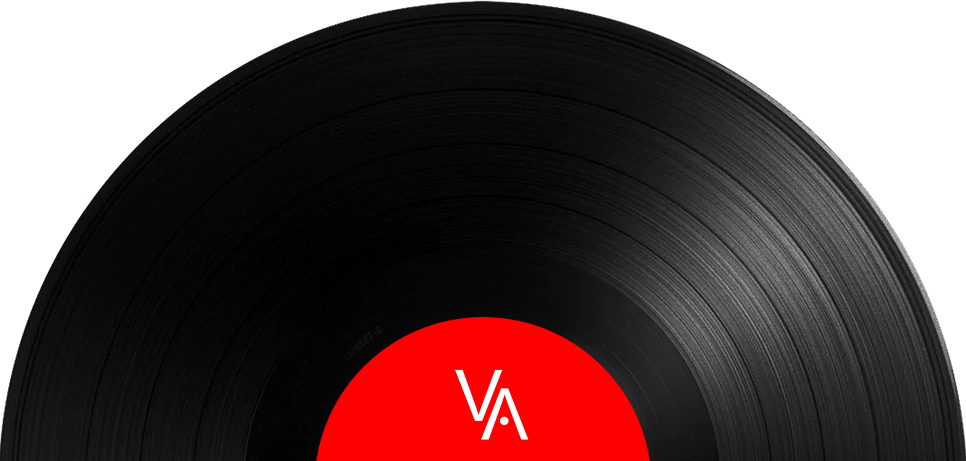
I’m lucky I have a copy. I was so jaded by the time this set came out that I was not looking to add another Robert Johnson set to my collection. Had it not been a vinyl-only re-issue I might have passed. But then I thought, “I’ll give it one more shot, just for Keith’s sake”. I’m glad I did!
The set contains 3 LPs, all exquisitely remastered and packaged in a limited edition deluxe gatefold jacket (said to be limited to only 2,500 copies worldwide, although I think it’s actually more) including extensive liner notes and a really cool poster featuring the original labels of all of Johnson’s 78 RPM singles, released more than 85 years ago on labels like Vocalion, Orion, Conqueror and others.
This is also the first time his complete recorded works have been made available in one vinyl package, and as far as I’m concerned it's the first time they sound decent.
Listening to Johnson's music now is a different experience than listening to it when I was very young. The older I got the more I realized this is where rock and roll comes from. I became less dismissive of the music, although it still didn't sound very good.

The Centennial Collection includes 29 original songs (spread over 41 performances, including outtakes) that were recorded in five sessions: three in November of 1936 and two in June of 1937, many of which remained unissued until the LP era many years later. Johnson's actual recorded output consists of just a dozen 10" 78 RPM records that were not widely distributed, making the copies that have survived extremely collectible.
When Johnson was murdered he was 27-years-old - the inaugural member of The 27 Club. Columbia Records issued King of the Delta Blues in 1961, which contained 16 performances, some of which had not been previously issued. Volume II was issued in the early 70s and consisted of 16 more tracks, some repeated from the first volume but also including Love In Vain, I Believe I'll Dust My Broom and Sweet Home Chicago that would become classics the world over.
It wasn't until 1990 that Columbia issued the two CD set Robert Johnson: The Complete Recordings, the first time all of Johnson's performances were assembled in a single package. It was also around this time the "deal with the devil" thing started and the Robert Johnson legend was born. The Complete Recordings has sold over 300,000 copies, and up until now it sounded better than anything that had been previously issued. But it pales in comparison to The Centennial Collection.
There was also a box set released in 2011 - when Johnson would have turned 100 - called The Complete Original Masters: Centennial Edition that replicated the 12 10" records Johnson produced. That set now fetches almost $1,000 on the secondary market.
Johnson's recordings stand out from other musicians' recordings made in Dallas and San Antonio, which were mostly hillbilly string bands or what was referred to as western string groups like Bob Wills' Texas Playboys. It's also interesting to note that of all the musicians recorded on these dates, there was only one other "race" performer who had been invited to the sessions.
Whoever he was.
If you want to hear where it all started, but with really great sound quality, this set is …
I’m lucky I have a copy. I was so jaded by the time this set came out that I was not looking to add another Robert Johnson set to my collection. Had it not been a vinyl-only re-issue I might have passed. But then I thought, “I’ll give it one more shot, just for Keith’s sake”. I’m glad I did!
The set contains 3 LPs, all exquisitely remastered and packaged in a limited edition deluxe gatefold jacket (said to be limited to only 2,500 copies worldwide, although I think it’s actually more) including extensive liner notes and a really cool poster featuring the original labels of all of Johnson’s 78 RPM singles, released more than 85 years ago on labels like Vocalion, Orion, Conqueror and others.
This is also the first time his complete recorded works have been made available in one vinyl package, and as far as I’m concerned it's the first time they sound decent.
Listening to Johnson's music now is a different experience than listening to it when I was very young. The older I got the more I realized this is where rock and roll comes from. I became less dismissive of the music, although it still didn't sound very good.

The Centennial Collection includes 29 original songs (spread over 41 performances, including outtakes) that were recorded in five sessions: three in November of 1936 and two in June of 1937, many of which remained unissued until the LP era many years later. Johnson's actual recorded output consists of just a dozen 10" 78 RPM records that were not widely distributed, making the copies that have survived extremely collectible.
When Johnson was murdered he was 27-years-old - the inaugural member of The 27 Club. Columbia Records issued King of the Delta Blues in 1961, which contained 16 performances, some of which had not been previously issued. Volume II was issued in the early 70s and consisted of 16 more tracks, some repeated from the first volume but also including Love In Vain, I Believe I'll Dust My Broom and Sweet Home Chicago that would become classics the world over.
It wasn't until 1990 that Columbia issued the two CD set Robert Johnson: The Complete Recordings, the first time all of Johnson's performances were assembled in a single package. It was also around this time the "deal with the devil" thing started and the Robert Johnson legend was born. The Complete Recordings has sold over 300,000 copies, and up until now it sounded better than anything that had been previously issued. But it pales in comparison to The Centennial Collection.
There was also a box set released in 2011 - when Johnson would have turned 100 - called The Complete Original Masters: Centennial Edition that replicated the 12 10" records Johnson produced. That set now fetches almost $1,000 on the secondary market.
Johnson's recordings stand out from other musicians' recordings made in Dallas and San Antonio, which were mostly hillbilly string bands or what was referred to as western string groups like Bob Wills' Texas Playboys. It's also interesting to note that of all the musicians recorded on these dates, there was only one other "race" performer who had been invited to the sessions.
Whoever he was.
If you want to hear where it all started, but with really great sound quality, this set is …



